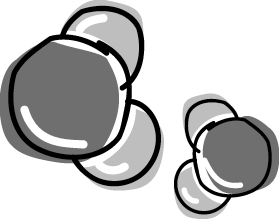
 |
|
 |
Growth of all organisms is dependent on receiving sufficient nutrients. The primary nutrients are carbon, nitrogen, and phosphorous. We receive our nutrients from the plants and other animals we consume. Plants also depend on these nutrients. Because of the relative abundance of carbon dioxide in the atmosphere, carbon is generally not a nutrient that limits plant growth. In rivers, lakes, and ponds phytoplankton and other plants are generally limited by the amount of nitrogen and phosphorous found in the water. The ratio of nitrogen (N) to phosphorous (P) in the water indicates which nutrient will be the limiting nutrient. N: P ratios are generally greater than 10, and thus are phosphorous limited.
Because lakes are generally
phosphorous limited, a number of detergents, fertilizers, etc. have been
blamed for the eutrophication of lakes and streams. Most detergents today
are labeled as being phosphorous free due to industry attempts to rectify
eutrophication problems.
|
Jar#
|
Nitrogen
Concentration
|
Phosphorus
Concentration
|
Observations
|
|
Control |
0
|
0
|
|
|
#1
|
0.1M
|
0
|
|
|
#2
|
1M
|
0
|
|
|
#3
|
0
|
0.1M
|
|
|
#4
|
0
|
1M
|
|
|
#5
|
1M
|
1M
|
The above table illustrates how to set up a matrix to test the effect of different concentrations of nitrogen and phosphorous on algal growth. Growth will take around one week or more and can be measured visually, or by using a spectrophotometer.
Record your results after one week and discuss how surface water runoff could effect the color, smell, and vitality of neighborhood lakes, streams, and ponds.
Primary sources of external nutrients are:
1. Municipal wastes
2. Industrial wastes
3. Agricultural runoff
4. Forest runoff
5. Urban stormwater runoff
6. Atmospheric fallout
Return to top
Next Activity
Return to WatershED Table of Contents